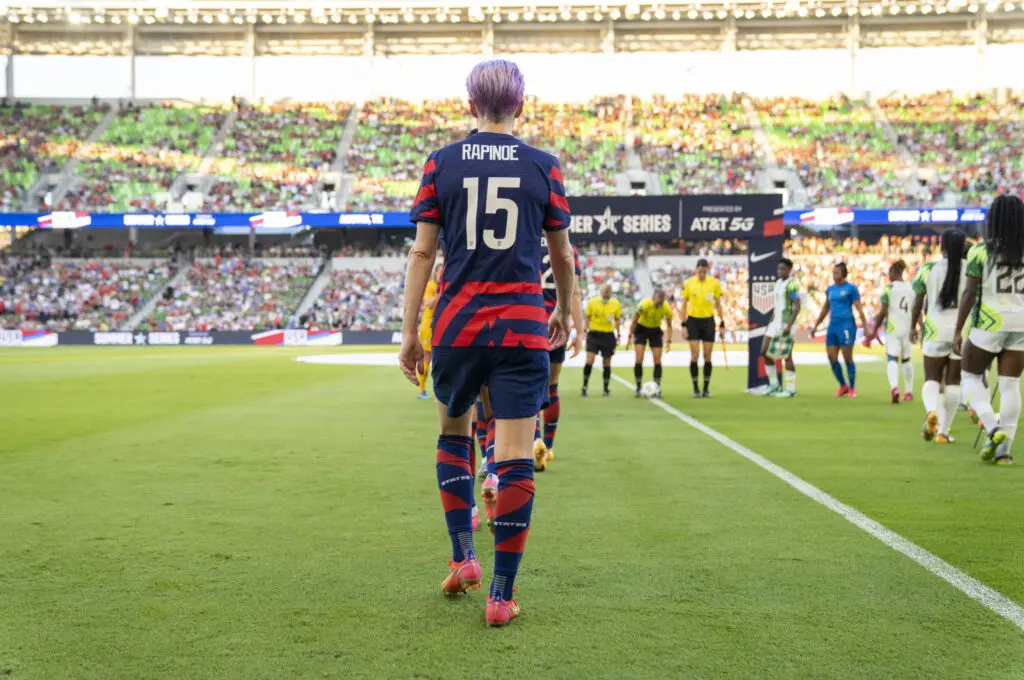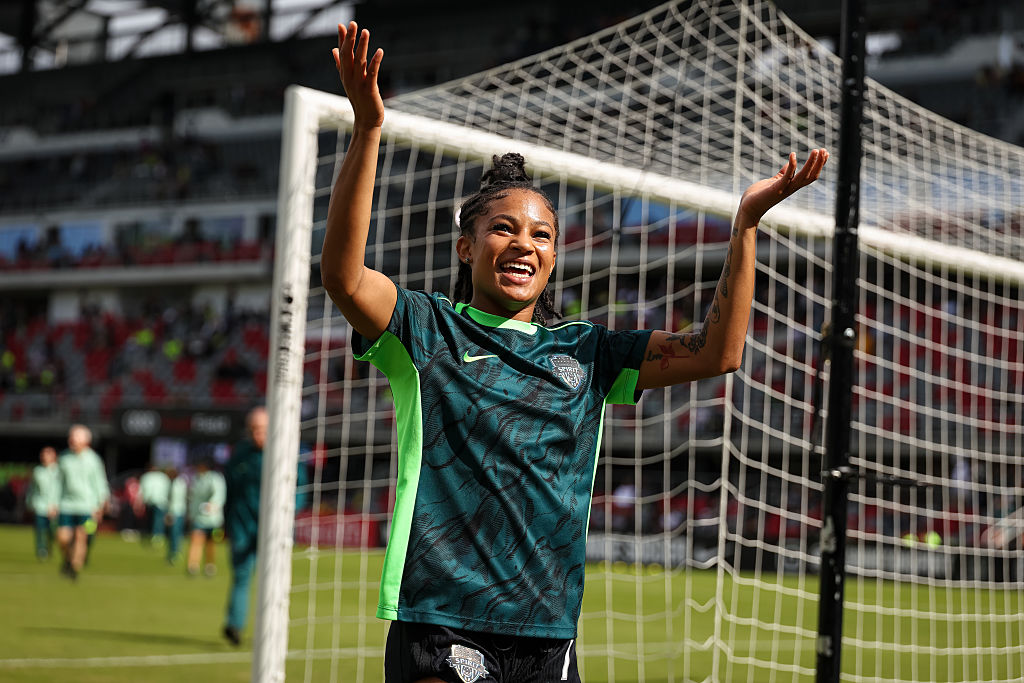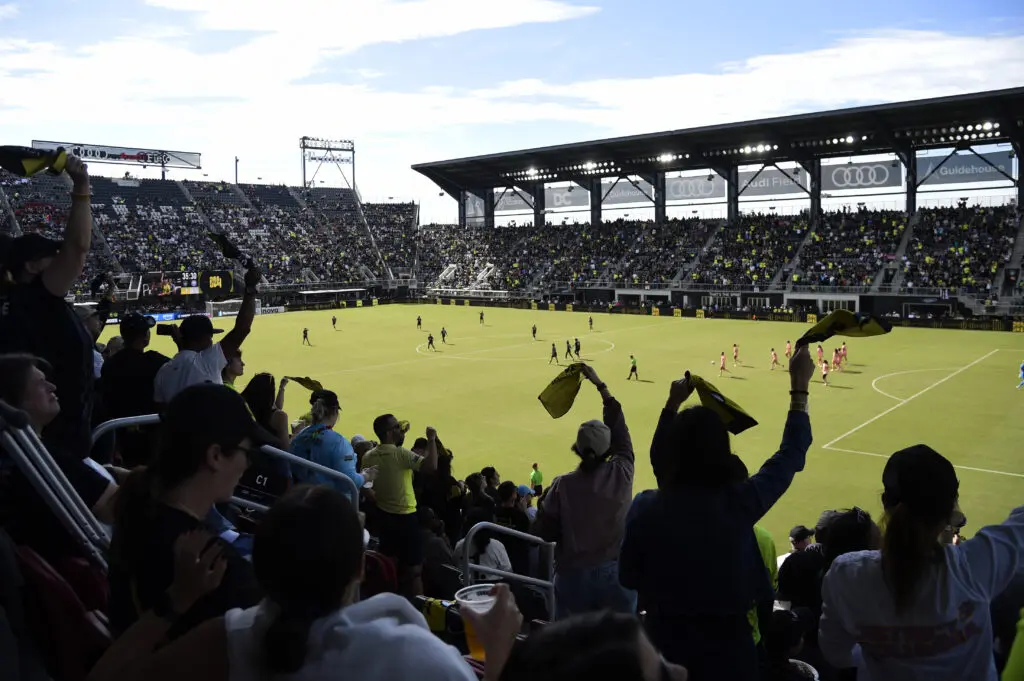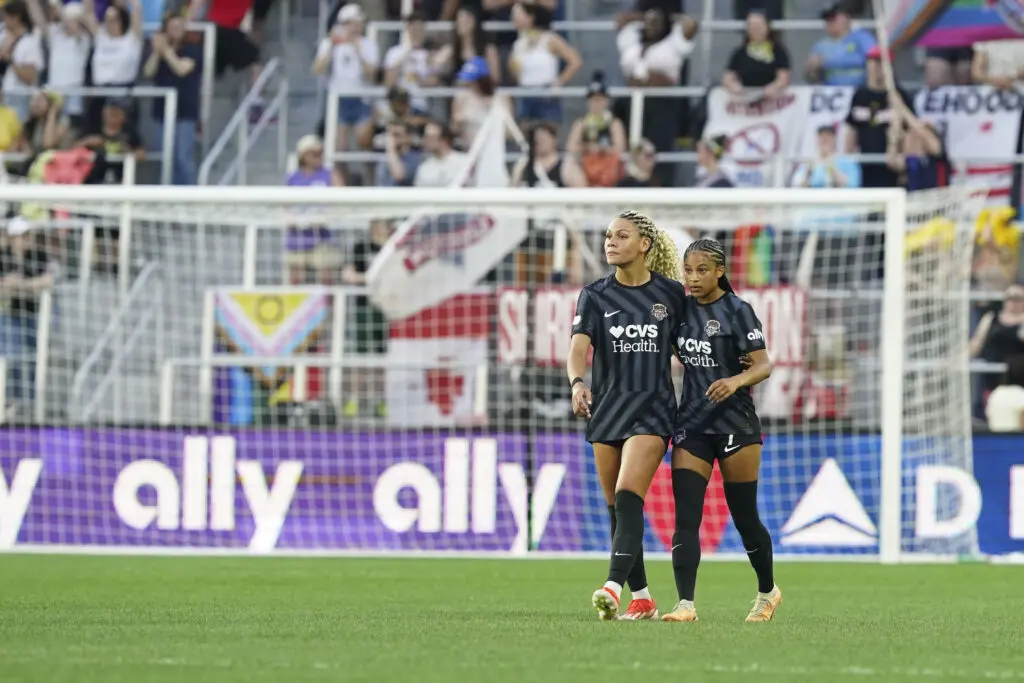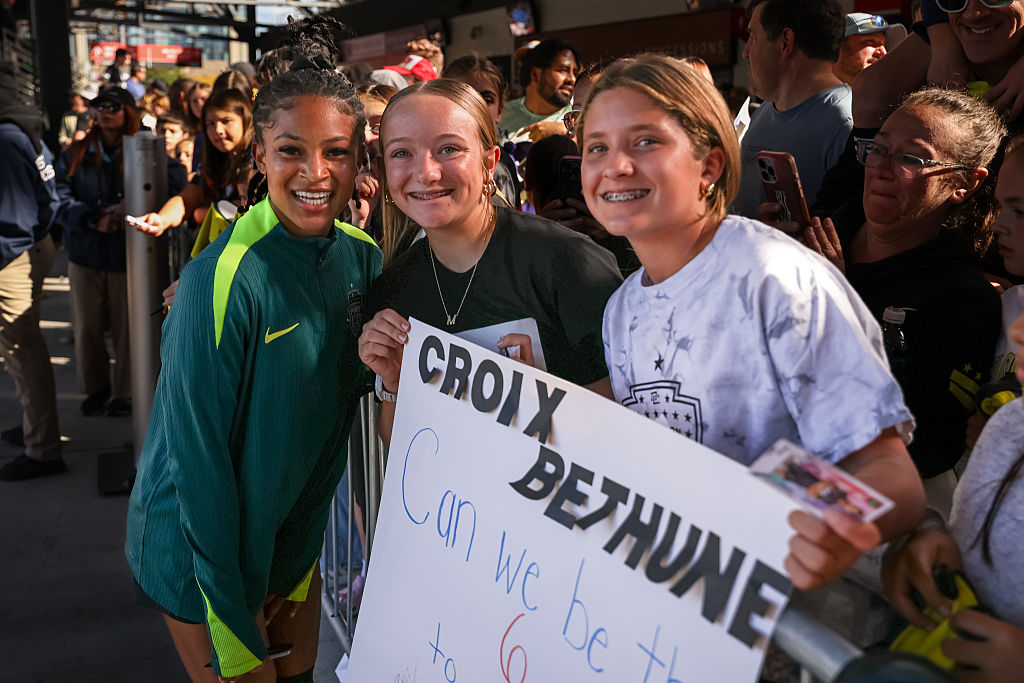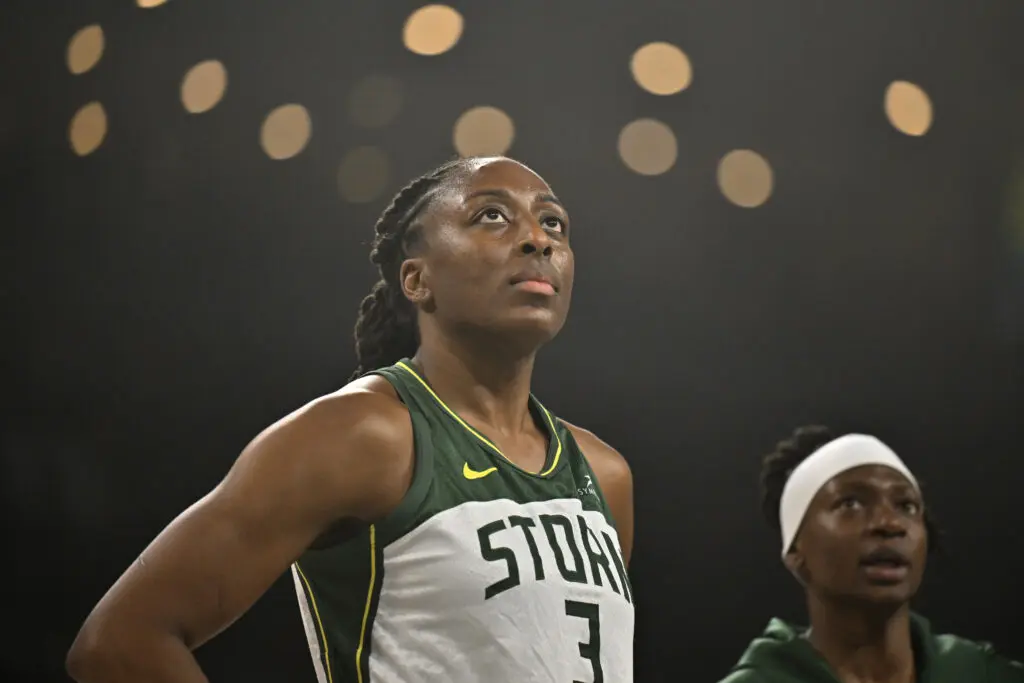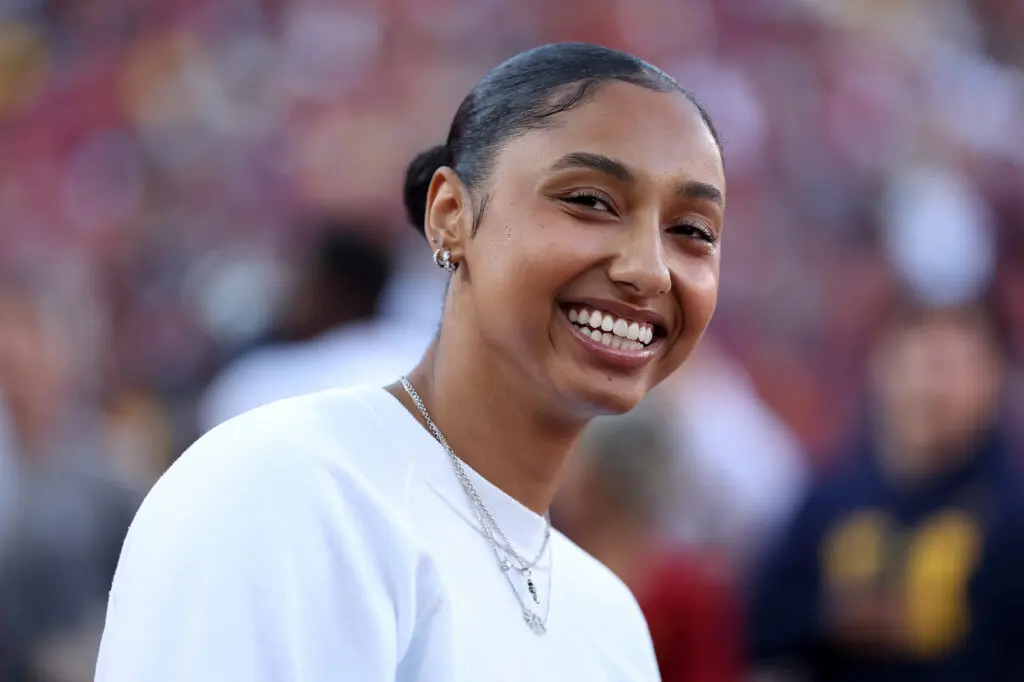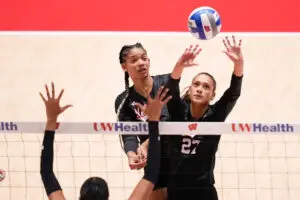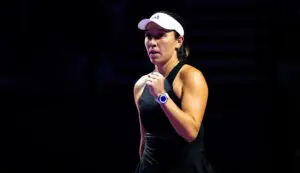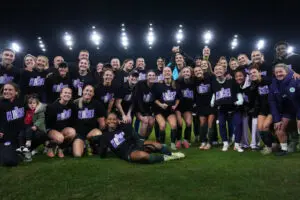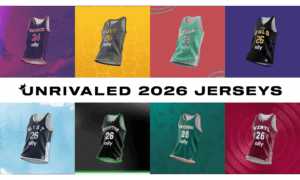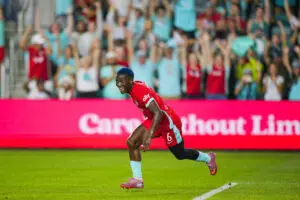United States women’s national team captain Becky Sauerbrunn is in Hartford, Conn., preparing for the final tune-up games for the Summer Olympics. In a few days, the group will leave for Japan and attempt to become the first women’s soccer team to win a World Cup and an Olympic gold medal in back-to-back tournaments.
Sauerbrunn has seen many wins during her 13 years with the national team, but when asked about a defining moment from her early years, her mind goes to one of their more high-profile losses.
The USWNT was in Mexico in 2010, deconstructing an upset loss to the Mexican national team that sent them into a qualifying playoff for the 2011 World Cup. Kristine Lilly, who had just played her 354th and final game with the team, imparted some final words of wisdom to a group that was reeling from the defeat.
“We were talking about the game in the hotel, and she was describing how she felt on the field, and how she felt alone,” Sauerbrunn said earlier this month. “And how, if there’s anything that this team should be about, it’s that no one should ever feel alone on the field. You should always feel the support of everyone around you, on the field and on the bench. And to me, that was like, that’s what this team is about.”
Sauerbrunn and her fellow veteran USWNT teammates have carried that ethos for years, into what is likely the last tournament with this particular group. The players speak with a collective understanding derived from many hours spent within a system and a deep sense of care for a program whose legacy they actively work to perpetuate.
It’s understood that USWNT camp can frequently be just as grueling as actual games, and not every player thrives in that type of intense, high-stakes environment. Such is the standard for a program that has won four World Cup titles and four Olympic gold medals, five more first-place finishes than Germany, the country with the second-most. But for those who have withstood the pressure, the culture of accountability is both a responsibility and a comfort.
When Crystal Dunn joined the team in 2013, Ali Krieger went out of her way to welcome her and help her acclimate.
“In my first camp, we had to run the beep test,” Dunn says. “And I was like, ‘Great, I’m about to get cut before I even kick a soccer ball.’ And (Krieger) ran the beep test right next to me and was cheering me on, encouraging me to do one more sprint, make it to one more round.
“I was like, ‘You don’t even know me, and you’re literally so sweet and so nice.’”
The players who have cycled through multiple World Cups and Olympics take seriously the responsibility to uphold the USWNT’s culture through the years.
Sam Mewis looks up to Carli Lloyd for going after what she wants unapologetically. Megan Rapinoe, like Sauerbrunn, remembers Lilly at the latter end of her career.
“She was obviously a beast in fitness, and was always one of the fittest players,” Rapinoe says. “That was something that I struggled with. And she looked at me one time, and she’s like, ’It’s hard for everyone.’
“That’s something that sticks with me to this day, and also just the way that she took us under her wing and didn’t look at us like, ‘This player is taking my position.’ She looked at us like, ‘This player will carry on my tradition that I’ve worked so hard for.’”

The USWNT has been criticized for its lack of turnover in the past, or holding onto veterans at a potential cost to player development. But roster consistency has also been one of the secrets of the USWNT’s success on the field, and part of what makes them so iconic off of it. Wearing the crest of the best team in the world comes with distinct expectations, and there is value in having a group that not only performs on the field but also carries on the winning history of the program.
For Rapinoe, 36, and Mewis, 28, paving the way for the younger generation means being supportive teammates, open to criticism and having fun while still upholding a competitive edge.
“When players come in here for the first time, we have to realize, especially the younger players now … they watched us in the World Cup,” Rapinoe says. “They probably cheered with their freakin’ high school friends and painted their faces, just like I did. I was in the stands in ‘99. So understanding that and ultimately just letting everyone be themselves. You can’t ever come in and be Mia Hamm, be Abby Wambach, be all of these players. You have to be yourself.
“I feel like we all continually educate ourselves on the standard,” she adds. “It’s like, you slip a f—ing millimeter and someone’s like, ‘Yeah, no, we’re not slipping.’ And then (it’s) the teaching, the learning, the giving grace, as well.”
Sauerbrunn, as the anchor of the USWNT’s backline, takes care to instill a team-first philosophy in players who are adjusting to their international roles. That guidance has helped Dunn immensely as she balances her position in the USWNT’s defense with her preferred attacking role on her club team.
“I struggled a lot with always having to be the player that others want me to be or others need me to be,” Dunn says. “Our backline has actually really helped me feel the most confident I can possibly be in a position that I sometimes don’t really love to be (in) … I’m playing next to the best center-back in the world, and she gives me so much support and so much confidence. She allows me to be me, and do the things that I need to do to be the best player I can be for the team.”
Dunn, now stepping confidently into a leadership role herself, takes the personal approach that she so appreciated from Krieger.
“Anytime there’s a new person in the group, or just anyone who’s been struggling or whatever it is, I really like to take time to just pull them aside and check in on them,” the 29-year-old says. “It can be as simple as just asking, ‘Hey, how are you doing? How did training go today?’ I think (it goes) a long way. It takes five seconds to really ask that question.”

The team’s identity is also rooted in the sheer amount of hours the players spend together. One of the only national teams with a history of training outside of FIFA breaks, the USWNT arguably lives, travels and plays games together more weeks out of the year than any other women’s national team on the planet. That advantage has paid dividends on the field and helped forge bonds that go beyond a simple co-working environment, which is especially significant heading into the last major tournament of a cycle.
“It’s kind of like we’re all individually on a journey, and some of us can see the journey ending and some of us can’t,” Sauerbrunn says. “I think there’s significance and a responsibility to make sure that everyone’s journey ends the way they want it to end. And so that’s a little bit of added pressure, because you want some of these players to go out on the highest high.”
As Rapinoe sees it, there’s also a practical advantage in spending so much time together and getting used to working with teammates when conflicts arise.
“We’re not all the best of friends all the time. If we have a night off, different people are going to dinner with different people. Certain people are close, but we’re all in this together,” she says. “We have to train every day, we have to be vulnerable every day, we have to show up in training, and do sh—y, and then face all these people all the time.
“No matter if I want to go to dinner with someone or not, when I lock eyes with them on the field, it’s like we know exactly what needs to be done.”
The team felt equipped to take on the challenge of back-to-back titles after 2019, but the unexpected year off after COVID-19 forced the postponement of the Olympics to 2021 also helped. While each player trained in 2020 like the Olympics were going to happen, the pandemic year provided physical rest, more time with new coach Vlatko Andonovski’s staff and the ability to reset mentally while being around family and friends.
“It doesn’t feel back-to-back at all, and for that I’m eternally grateful,” Rapinoe says. “I think it does give us a better chance from a physical, emotional, mental standpoint. It’s just exhausting.”
The USWNT will also benefit from having a 22-player roster, expanded from the traditional 18 in a last-minute acquiescence by the International Olympic Committee over COVID-19 concerns.
The gap year was especially trying for Sauerbrunn. She suffered a hip injury in the group stage of the 2020 Challenge Cup that sidelined her for the longest time in her playing career, forcing her to dig deep within much uncertainty. She rehabbed diligently, returning for that year’s NWSL Fall Series, and she met with a sports psychologist to strengthen her emotional foundation.
“When I was just really working on myself, kind of building myself back a little bit, there were definitely thoughts of like, OK, is this kind of the end of my journey? Like, is this where I kind of just sew everything up into a nice little bow? And I didn’t see it. I thought maybe people saw it for me, but I didn’t see it myself,” Sauerbrunn says.
“For me, that was kind of a grounding moment where it was like, wow, I’m gonna have to work myself back up from zero. And not only physically, but also I think I was going through my own kind of emotional journey of finding confidence, needing to find confidence and believing in myself.”

However, the same year that allowed the players to reset and sharpened the team’s chances of winning gold also led to questions about what this team stands for.
The USWNT has been at the forefront of the fight for equal pay for years, and Rapinoe in particular became a lightning rod in her stance against the Trump administration during the team’s 2019 World Cup run. This past year, though, brought new challenges. Sauerbrunn and Rapinoe spoke openly about how the team struggled to present a unified front in the wake of the protests across the United States after the murder of George Floyd at the hands of a police officer.
“I think, as a team, it was the first real time we’ve talked about racial injustice and attempted to have some open conversations about it. And I think our team struggled, we really struggled with it,” Sauerbrunn says. “And from those conversations, I think it then evolved to, ‘Well, what are we doing to impact change?’”
“This year has been difficult, for sure, and a lot of hard conversations have happened,” adds Rapinoe. “Sometimes conversations don’t happen, and that’s just life.”
When the USWNT reconvened for games late in 2020, the playing of the national anthem presented a stark image of some players kneeling in protest and others standing with their hands over their hearts. For a team that embodies Lilly’s lesson of no one feeling alone, the players’ individual differences were suddenly on full display.
“That’s part of the conflict management, too,” Rapinoe says. “I mean, I don’t need to spell it all out. I think you know what the conflicts are. But then it’s like, we have a job to do. And we have to be able to coexist and have hard conversations, and maybe those conversations don’t go great and then you’ve got to go practice and show up for that person. And like, someone f—s up on the field, and you’ve got to run back for them. So it’s all of those little things of putting personal stuff aside, or beliefs or whatever it may be, (because) when we’re out on the field, that is where we have the most impact.”
Says Dunn: “I think, as a whole, our team is very good at standing up for various causes and giving a lot of energy to things off the field. I wouldn’t say that every single member of the team is as equally passionate about everything off the field. So, as a whole team, we obviously have this collective identity, but I think there are some people that probably do want to just show up and play soccer, and that’s totally fine.”
We wear Black Lives Matter to affirm human decency. This is not political, it’s a statement on human rights. pic.twitter.com/QHDAx4iv7k
— U.S. Soccer WNT (@USWNT) November 27, 2020
Says Sauerbrunn: “We’ve been blessed with this platform that we can do really great things with. We are also a snapshot of this country. And I think that’s what your national team should be, is a snapshot. So, we have people that have different ideologies and believe in different things. And I think what this team can stand for (right now) is somehow coming together still as a collective, and putting our sights towards one goal and still being successful as a group, even though we have all these different things that we believe in and feel so strongly about.”
In light of 2020, Dunn considers these Olympics to be more significant than ever for her. She wants part of her legacy to be that she used her platform to make life better for Black soccer players coming up after her.
“I’ve always felt that I want to use my platform to really advocate and encourage and inspire others who look like me, who may not feel as comfortable in their own skin to play the sport and be in this space that they don’t feel the greatest,” Dunn says. “And I personally don’t ever feel like I’ve had the luxury of just showing up and kicking the ball and going home. I’ve always felt like I am playing bigger than myself. I’m playing for more things than just Crystal Dunn.
“I think, for me, when I wear this jersey, when I represent this team, represent this country, everything that I’m fighting for is the image of what I truly believe America should be.”
The past year has given the USWNT a more layered understanding of those individual differences, a shift Rapinoe thinks has come with time.
“I think we value people’s individuality more,” she says. “I think we allow people to be their full selves more. Sports, in this one sense, (are) the beacon of progress. But the actual environments are one thousand years behind. So, I think we’re continuing to evolve that fight for our worth, and fighting to allow each and every one of us to be a whole human being in this environment. I’m really proud of that.”

The Tokyo Olympics might be the last major tournament for the core of this group, one that has carried the USWNT to a new level of success. The average age of roster is nearly 31, and the likelihood that the 2023 World Cup squad will look very different is a reality many of the team’s veterans aren’t afraid to acknowledge. While the trophies and on-field success matter to Sauerbrunn, Dunn, and Rapinoe, they want the impact they leave on the next generation to be as much a part of their legacy as the wins.
“The reason that we have been as successful as we have — and when I say ‘we,’ I mean all of the ‘we’ forever, for the history of this team — is because our standard is not, ‘Oh, we won.’ Our standard is, ‘Where can we always get better? What more can we do?’” Rapinoe says. “So it’s almost like the job is never complete. And I think we feel that way off the field, as well.”
“I do think this group’s culture is very much founded on leaving this game better,” Dunn says. “We are very much aware that everything we’re fighting for, we may not reap the benefits, but it is about leaving it so much better for others who are coming in after us.”
Sauerbrunn, 36, isn’t sure what the future holds. The captain wants to cherish every final moment and hopes that, when her playing days are done, her legacy will live on in the team’s future.
“I would say that I would hope that I am remembered, but that I’m not missed,” she says. “Because if I’m missed, then I didn’t do my job. But if I’m remembered, then I had an impact. And I would be just fine with that.”
